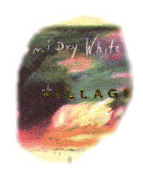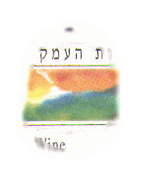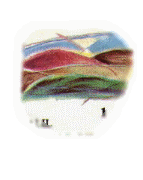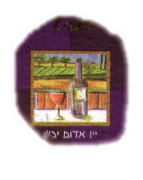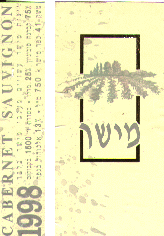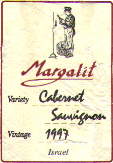


|
|
 |
|
|
 |
 39. Married, 2 little children, french, executive in a manufacture of
laboratory equipment www.israflow.com.
39. Married, 2 little children, french, executive in a manufacture of
laboratory equipment www.israflow.com.
Life is made such a way that it made me encounter who was going
to my wife inside a beautiful Israeli woman, the cause of my 12
years+ exile to Israel in general and Tel-Aviv in particular.
During the most part of my life before I became independant, I
enjoyed the Cuisine of my grand-mother and mother using largely
the products from the farm of my other grand-parents, 15 km off
from the belgium border. At this time it was obvious that an egg
is an egg, a potatoe a potatoe, evrything was simple, tasty and
available.
My father developped a curious love for wine and stored up to 600
good bottles in his best times and made me familiar with quite
the best of Alsace, Bordeaux, Bourgogne and Rhone. I actually
tasted my first wine only around the age of 18 at St-Emilion in
the cellars of Chateau Puy-Razac... It was delicious !
Second part of my life : Tel-Aviv. The first months were quite
brutal. It seemed that only vegetables were left with some fade
cheese, a situation which brought me quite close to depression in
a short time.
Thanks to contacts in the french embassy I discovered my first
decent butcher (I'm still a faithful client there) and I took
then on myself much of the work of preparing food at home. I
happily leave to my wife the work on salads (I'm awful in this
but she's a champion) and vegetables, but concentrate on first
and main courses.
Both of us are not fanatic of sugar, so we usually don't finish a
meal with a dessert but with a salad, a good cheese or fruits...
I've never been used to the optics of going at the latest minute
to the closest grocery in order to find a wine for a good meal.
It has always been obvious to me that buying a wine was a
separate act, that this bottle I buy now would fit an occasion
which may occur three months, two years or 10 from the time I'm
buying the wine.
My collection doesn't include great wines but still it's possible to have a lot of pleasure from the average league. These are a modest reminder of the good times I had with many of the products shown.
It's quite difficult for a french to admit that there can be wine
out of France. The israelis were surprising, turned to be good
and some of them bring me today to enthousiasm. By the same way I
also discovered nice juice from Australia, Chile, Argentina, the
USA...
Icertainly don't intend to make lessons : my wines are not the best in the world, I'm not the best cook of any country and my taste about combining food and wine can certainly be widely contested.
I'm not enough a specialist or experienced in order to describe
the different berries one may feel in this or another wine, nor
did I want to try to give notes. I respect enough the work of professional critics in order not to try to imitate them. If I enjoy a wine, I'll say it.
If not, I'll say it also, I'll make by best in order to go a
little further than saying good or bad. I feel that's the best I
can do.
I have considerably more interest in reds than in whites. Consequence of the local offer ? The main exception yet is the Alsace wines, Tokay-Pinot
Gris more particularly.
|
|
 |
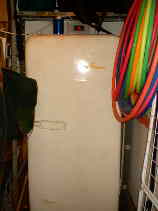 With temperatures exceeding 30 C for almost 5 months every year, I had to find a solution for properly cellaring my wines as my cellar increased in value.
With temperatures exceeding 30 C for almost 5 months every year, I had to find a solution for properly cellaring my wines as my cellar increased in value.
In fact, for years, I used no cooling device and had finally only one bad surprise, but it was starting to be a little frightening : one can't be every time lucky !
I forgot quickly about buying a wine storage cabinet. As it's the general practice in Israel, the prices were totally out of reach for a normal human being. So I bought (for cheap) an old israeli fridge, connected it through a temperature controller with a sensor inside which activates it when the temperature reaches 14 C and stops it at 12 C.
What's good with these old israeli fridges (Amcor-Fridman for connoisseurs), is that they're rock-solid and that their compressors are almost totally silent and vibration free. An other concern I had was humidity, but at the end of the cooling process the cooler accumulates a thin layer of ice which is later released in the air : it's almost raining inside sometimes ! As long as care is taken about insulating the bottles from a direct contact with the cooler, the conditions inside are perfect !
My israeli readers should appreciate that I got this way a good storage for 70 bottles for less than 700 NIS. Drop me a mail and I'll let you know where you can get such a controller.
|
|
 |
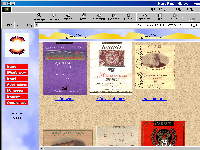 This site is born thanks to Pamela Anderson (She
really looks good !). In fact, I was making some research at work
when the suggested answers included a site of nude celebrities.
Could I resist ? The site was of course gone since a while but
www.fortunecity.com proposed me to take 20 Mb like this, for
free..
This site is born thanks to Pamela Anderson (She
really looks good !). In fact, I was making some research at work
when the suggested answers included a site of nude celebrities.
Could I resist ? The site was of course gone since a while but
www.fortunecity.com proposed me to take 20 Mb like this, for
free..
I threw to there everything I had available in the kind of
euphory I had that suddenly I was looking at the Internet not
only from the side of the consumer...
At a second stage, I decided to use this place a little more
seriously and to share in it my experience of this exile. I had
many aspects to cover, food being a part of it and wine a part of
this part also... which inflated so much that it took about 75 %
of the site. By the way I also started to invest a little in the
graphic appearance of the site and moved it to www.geocities.com
where the advertisement was more discrete.
For doing this latest release, I finally had a serious computer,
patience and the encouragement of the visits and echoes from
numerous wine lovers all around the world. I decided that the
wine was worth an entire site so I dropped the other things. I
hope this new old site will give me the opportunity to make even
more wine virtual meetings...
I don't want to make any politics in this site. The maps of
israel featured are based upon the "de facto borders"
of the state of Israel today and I didn't have the technical
means to underline the territories under Palestinian authority.
This doesn't mean that I approve or disapprove this line or
another. My Israeli, Syrian and Palestinian visitors are all
welcome.
In order to give some life to the thing, I created the
"Menus" chapter, where one can find ideas for a good
meal with a suggestion of wines. When the menu is for an event, I
generally suggest a list of different wines which, from my
opinion, fit well the different courses. When the menu is more
reasonable, we usually drink one wine only, I then suggested up
to 4 different wines, introducing usually at least one foreign
alternative. That doesn't mean that the israeli wine is
"like" the imported one. It simply means that both seem
to me adequate for this same meal. The visitor will have to
imagine what may be the common character of the alternatives.
|
|
 |
 Most of the israelis are still disconnected
from the subject and limit their wine culture to three categories : dry, semi-dry and sweet. They would never spend more than $ 5 for a bottle and prefer semi-dry white or blush wines. This is certainly why no one of the large companies renounced about producing this kind of stuff. On the second hand, the growing minority of
wine-sensible people is very active, usually economically well
installed and somewhere patriot so that any new successful
israeli wine born somewhere in the country gets quickly a large
audience.
Most of the israelis are still disconnected
from the subject and limit their wine culture to three categories : dry, semi-dry and sweet. They would never spend more than $ 5 for a bottle and prefer semi-dry white or blush wines. This is certainly why no one of the large companies renounced about producing this kind of stuff. On the second hand, the growing minority of
wine-sensible people is very active, usually economically well
installed and somewhere patriot so that any new successful
israeli wine born somewhere in the country gets quickly a large
audience.
No doubt that the Golan heights winery and different boutique
wineries initiated the trend of producing quality wine for this
public, but today all the wineries developped quality wines
interested in touching this public able and ready to pay and
enhancing their reputation by the same process.
Wine is an expensive affair in Israel. A basic "vin de
table" will cost about $ 4 for a bottle. A starter wine of
noble variety costs at least $ 7 for a bottle, this price will
increase up to a range of $ 15 to $ 40 for a matured wine bought
"Primeur". For old bottles (5 years old or more) the
prices will often if not generally exceed $ 100.
Australian and american wines are sold at about twice their price
from their country of origin. For french wines the ratio can grow
up to 3 to 5 times the price. A good Alsace that I may find in
Europe at about $ 5 for a bottle, will cost me in Israel about $
20. For a "Vendange Tardive", it will exceed $ 80 ! I
hope that from these figures one will understand that my foreign
wines are not always the top of what each country has to offer.
10 years ago, I would not have considered proposing something
else than french wines for a festive meal. I didn't find here so many whites worth of interest, but many reds are interesting from the top series of the big manufacturers and from many of the boutique wineries. With some practice, it appeared that most of this production, pleasing on release, would relatively quickly reach its peak around the age of 4 or 5. There are also a few beasts which seem able to get over 7 or 10 years old. I'm still exploring !
|
|
 |
The visitor will
find links to the sites of many label collectors from all the
world in the links section... and what they show there is usually
beautiful ! Yet, my feeling is that the art of labelling remained
quite below in Israel and that some audacious graphists may find
there a field where to use their talent.
The Meishar label has an unusual shape with not too much fantasy.
It's an elegant mix of classicism and modernism. Finally, the label of Margalit suggests that each and every
bottle is like an elaborate liquor prepared in a kind of lab,
this being reinforced by the use of the cursive writing (one
knows that I'm not usually a fanatic of this practice). Knowing
that Yair Margalit is a chemist by profession, I feel
authenticity and also a certain degree of humor in this label. By
the way, I like the logo so much that I used it in many of my
pages. I hope I won't have problems of copyrights...
The most common theme in Israeli labels is a suggestion of the
antique practice of vine growing in the holy land, suggesting that today's wine-maker are continuing a tradition as ancient as the bible. However, it's a luck that this interpretation quite betrays the historical truth. Historical evidence seems to prove that the products of the ancient times were quite awful. Daniel Rogov prays as one of the major contributions of the Islam the removal of the old vines from the land of the country !
The second theme commonly referenced by the wineries born in these times, is the renewal of vine
growing by the end of the 19th century. Once again, this picturesque hides the funny quality of the israeli production until recently !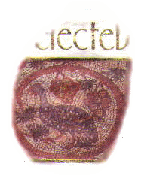
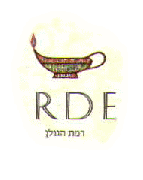
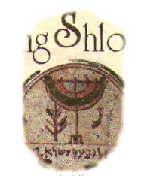
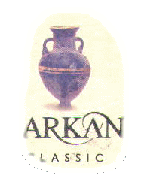
Finally a third family of labels include a more or less
figurative description of a particular vine growing area. C'est tout ! Except a few more imaginative boutique wineries labels and some special editions, almost all the israeli labels can be entered into these 3 categories or in a forth limited to some calligraphic performance.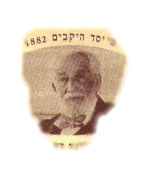
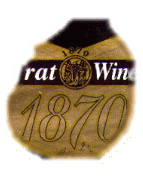
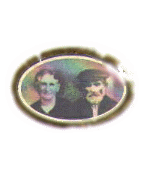
The linguistic confusion is complete. Many labels include
mentions in Hebrew, French and English, sometimes as a simple
translation for non-israeli clients, sometimes as a way to
"hide" the israeli origin of the wine ? A good example
of this confusion is obvious in the latest collections of
Carmel-Mizrahi : the Zichron-Yaacov wines have labels in Hebrew
only. For the "Private Collection", hebrew and english
alternate. See all these examples and
you'll get what I mean by confusion.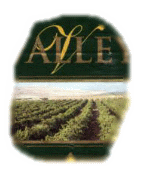
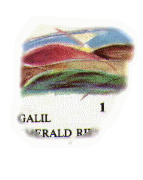
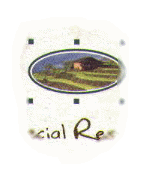
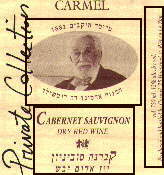
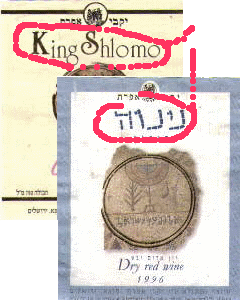
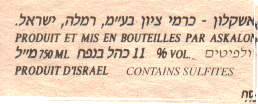
There's, according to my taste, an abuse of cursive writing. Used only from time to time, it may give a kind of personnal touch to a bottle. But when many bottles neigbouring on the shelves of a supermarket hold the same kind of artefact, it looks more like a worn trick of a poorly inspired graphist.
I feel also an abuse of naive representations of places or situations. Once again, used once, it may give distinction to the product, too much it turns to be poor. I'm far from being an expert in modern art, so I would enjoy if someone could explain me if I'm wrong.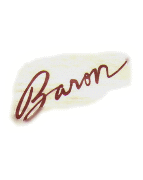
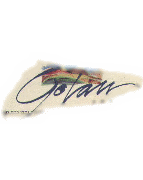
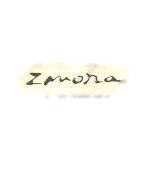
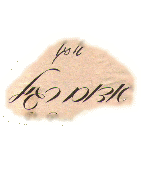
There are labels I like. The Zichron-Yaacov, in Hebrew only
evokes well the place and the time of it's foundation. The whole
gives a feeling of authenticity.